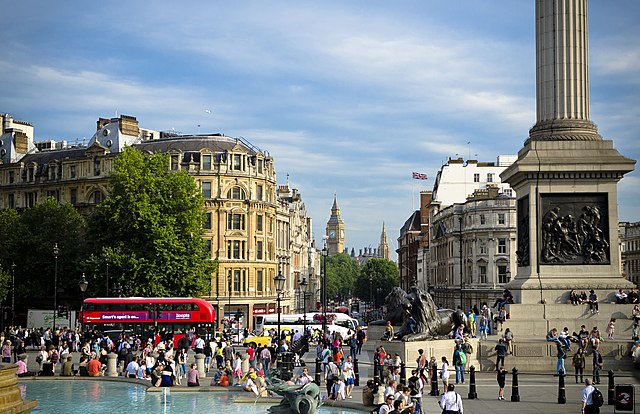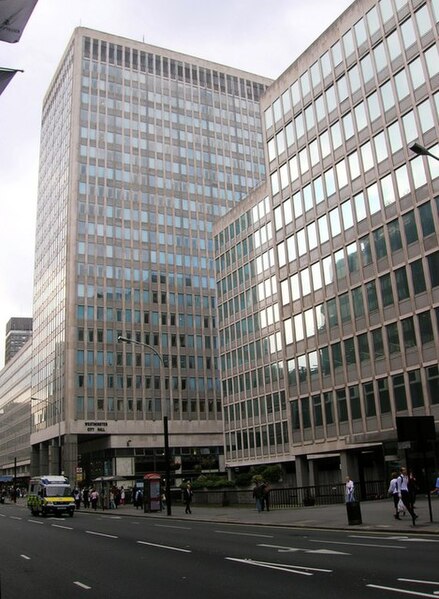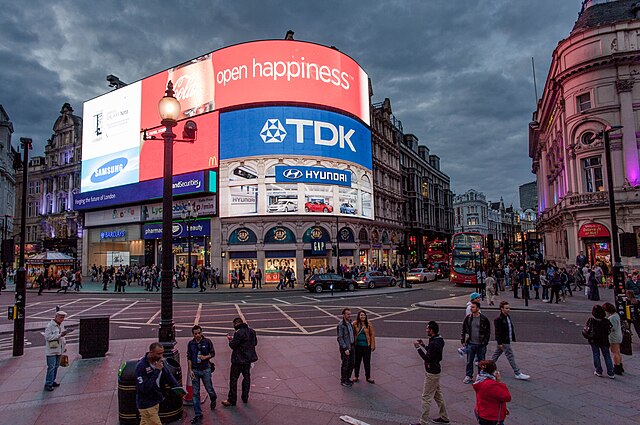The City of Westminster is a city and borough in London. It is the site of the United Kingdom's Houses of Parliament and much of the British government. It occupies a large area of central London, including most of the West End. Many London landmarks are within the borough, including Buckingham Palace, Westminster Abbey, Whitehall, Westminster Cathedral, 10 Downing Street, and Trafalgar Square.
Trafalgar Square, an open plaza in the city
Westminster City Hall, completed in 1965
Piccadilly Circus (September 2012)
Big Ben is the nickname for the Great Bell of the clock at the north end of the Palace of Westminster and usually refers to both the clock and the clock tower (Elizabeth Tower).
City status in the United Kingdom
City status in the United Kingdom is granted by the monarch of the United Kingdom to specific centres of population, which might or might not meet the generally accepted definition of cities. As of 22 November 2022, there are 76 cities in the United Kingdom—55 in England, seven in Wales, eight in Scotland, and six in Northern Ireland. Although it carries no special rights, the status of city can be a marker of prestige and confer local pride.
Until the 19th century, city status in England and Wales was associated with the presence of a cathedral, such as York Minster.
Birmingham was the first English town without an Anglican cathedral to be granted city status. Birmingham City Council meets at the Council House.






